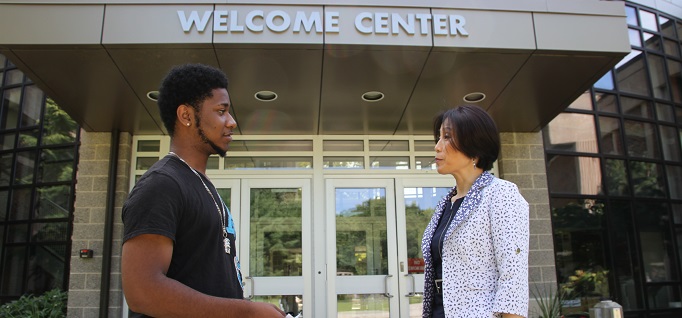Building a new structure
By Douglas J. Guth
March 28, 2017
In the face of challenges, community colleges undergo major organizational redesign
When Jianping Wang joined Mercer County Community College (MCCC) as the college’s president in July 2015, she was quick to vocalize the unprecedented challenges facing community colleges today, among them declining enrollment, decreasing public funding and increasing demand for higher graduation rates.
Such fundamental problems called for re-examination of the school’s foundation, an assessment Wang deemed necessary to ensure her students entered the working world as productive employees and engaged citizens.
The newly minted administrator laid out a strategic plan that overhauled MCCC’s organizational structure and changed its culture based on the tenets of faculty-wide accountability and professional effectiveness. Drilling down into these larger issues meant presenting a reimagined advising system, a new student intake process and the integration of technology-driven strategies to make student success—as Wang puts it—”everyone’s business.”
Nearly two years after restructuring, MCCC has seen slight increases in its enrollment and graduation rates. Wang credits a portion of this uptick to the streamlining of programming and services, but she knows the work is far from complete. Nor is she alone, as community colleges across the nation are redesigning their educational infrastructure to better orient and guide students toward completion.
“We saw the challenges faced by schools these days as an opportunity to innovate,” Wang says. “It was an impetus for innovations we never even dreamed of.”
Keeping it together
Service and accountability form the basis of MCCC’s new foundation, notes Wang. Changes start at the front end of the student experience, with receptionists trained to field basic administrative questions about financial aid, registration and other topics. All staff members are asked to help students with directions on campus, in some cases literally walking them from the parking lot to their destination.
“This is part of a cultural change,” Wang says. “If we don’t innovate, we’ll get the same results we’ve always gotten, which is not what we want.”
Raising the school’s retention rates—only about 14 percent of MCCC attendees stay with the school to completion—means easing the complex pathway from entry to graduation. For example, advising systems that had previously been organized by last name are now categorized into clusters based on a learner’s background or study program. Today, military veterans, would-be health professionals and dual-enrollment students all have their own easily accessible categories.
Advisors place cluster data into a newly installed tracking system that is then transferred to professors, giving them critical information about a student before they ever step into a classroom. Meanwhile, color-coded course tracks create clearly defined outcomes for learners unsure of what classes they need to graduate, a game plan bolstered by an Amazon-like “shopping cart” of suggested courses assembled by an academic advisor.
Lending coherence to course selection is particularly important in the retention of community college enrollees, a significant number of whom are adults with children and other responsibilities, or sometimes leave school mid-semester because of family emergencies or changes in employment.
“Many of these people are first-generation college students who don’t know the system,” Wang says. “With our new structure, we have advisors reaching out to students to tell them what they need to do.”
This article is part of a story featured in the upcoming April/May Community College Journal.



